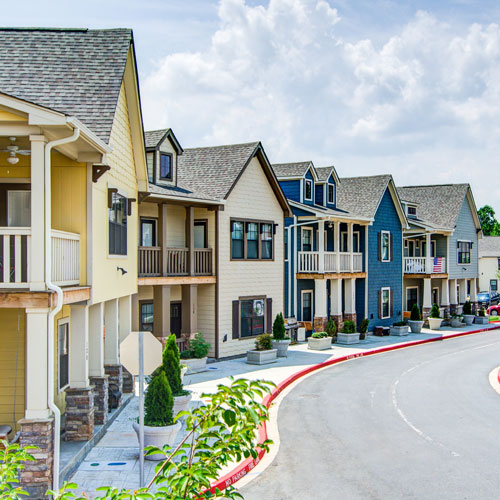For a not-for-profit such as John Muir Health, a health-care system that serves patients east of the San Francisco area, good budgeting is critical to maintaining operations. And, in late 2009, the organization determined it could drive down operating costs by aggregating physician practices in a central location.

“We had eight practices spread throughout Walnut Creek, California, and it was clear that we could obtain better lease rates, improve flexibility around capacity, and offer more services by integrating and consolidating,” says Michael Monaldo, John Muir Health’s vice president of facilities development and corporate real estate.
The project took a while, with site selection a particular challenge given the sheer size of the facility needed. Monaldo and his team scoured the area for existing buildings, and they even briefly considered building from the ground up before eventually finding a space at 1450 Treat Boulevard. Once the location was chosen, though, John Muir Health was able to work swiftly with Seattle-based architects NBBJ and Swinerton Incorporated to build out the Walnut Creek Outpatient Center, which not only brings the organization’s staff largely under one roof but will also refine its workload.
At 144,000 square feet, the Walnut Creek Outpatient Center building was larger than John Muir Health needed, but its extra room allowed the organization to consolidate administrative staff on the upper floor. And, from a real estate perspective, the structure’s build-out was unique because it followed a prototypical modular layout despite having 70,000 square feet of space allocated to medical services. “We wanted to standardize these clinics to improve work flows and to provide a consistent and high-quality patient experience,” says Monaldo, who worked on the design with extensive input from physicians and clinical support staff. “This standardization also allows us to move physicians without having to remodel spaces. When we move from this clinic to others we’re developing, it will be like pressing a repeat button. There will be different physicians, but the clinics and exam rooms will be laid out the same way.”

Before, the medical practices aggregated into the Walnut Creek Outpatient Center all had their own processes. “All provided a high quality of care, but all were different,” Monaldo says, “and we are working to provide a consistent patient experience across John Muir Health.” In parallel with the regimentation of its work flow and work spaces, the organization has also rolled out an electronic medical record (EMR) from Epic, eliminating the need for paper charts and thus increasing the efficiency and efficacy of its patient care even further.
From a clinical perspective, the Walnut Creek Outpatient Center, which includes space for up to 43 physicians, their clinical support staff, and support services, bolsters John Muir Health’s new ambulatory strategy to provide better access for patients and improve outcomes at a lower price. “We made the patient experience more convenient and pleasant by combining physicians, imaging services, labs, care coordinators, and patient educators into one location,” Monaldo says. “Patients who need lab services don’t have to make a separate trip, and patients who need immediate care that is not an emergency can be seen in the urgent-care clinic.”
The Walnut Creek Outpatient Center opened for patients in January 2014, just 14 months after John Muir Health’s board of directors approved its business plan. “Because we didn’t have to go through the entitlements and planning approvals necessary for new construction, we shaved 18–24 months off the project,” Monaldo says. “And that was important, from both the clinical side and real estate side. We wanted to get physician practices up and running in the new setting, but we also had aggregated a lot of leases with coterminous expiration dates. … We had a limited amount of time, and that forced people to make decisions thoughtfully but quickly.”

Initially, the transition into the new building with new processes was a concern. “Imagine leaving work on Friday and showing up on Monday to a new space with different people, different processes for registration, and different types of records,” Monaldo says, but he adds that everything went smoothly thanks to a change-management team. “We had representatives on-site to answer questions about the EMR at the same time people were trying to figure out where the bathroom was.”
The Walnut Creek Outpatient Center has been so successful that John Muir Health is now working on a similar project in Pleasanton, California, where the company is working with Tenet Healthcare to renovate an existing building. It’s also working with local firm Roberts Boché Associates, Inc. on a number of other renovations in the same vain. “The idea of one-stop shopping for the patient is a big piece of our ambulatory-care strategy,” Monaldo says, “and we’re trying to replicate the idea in several locations.”


